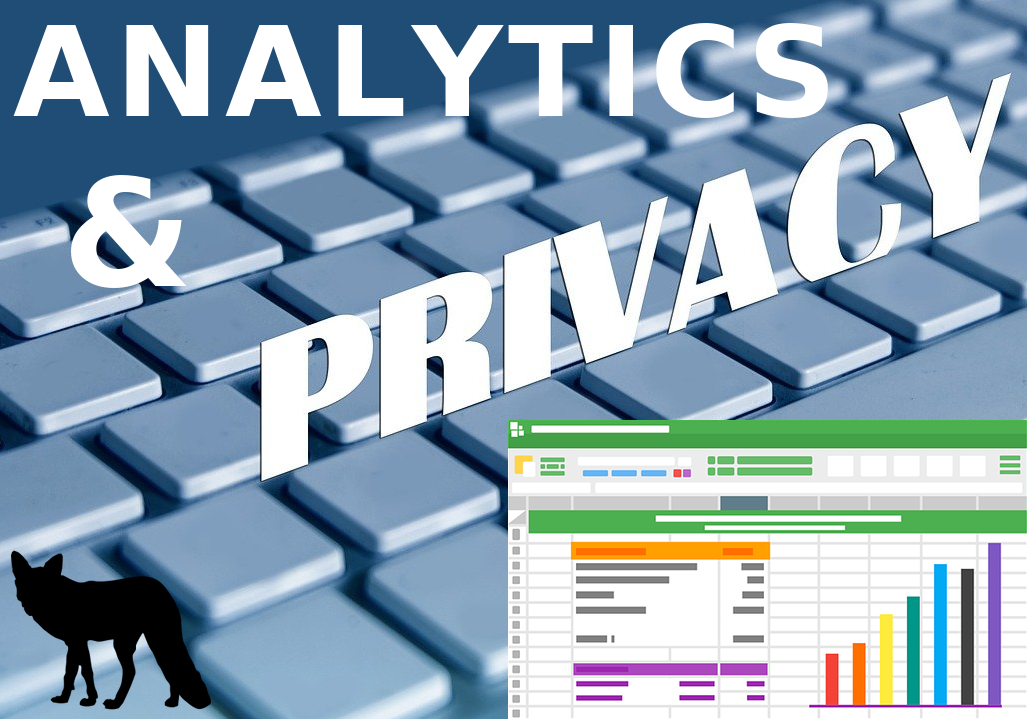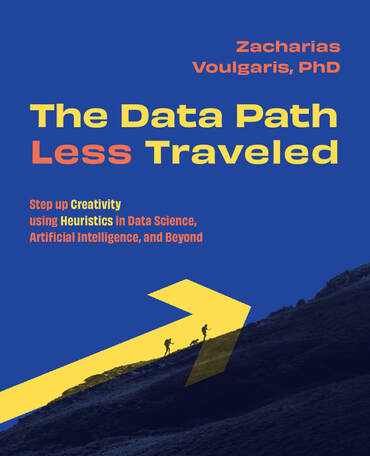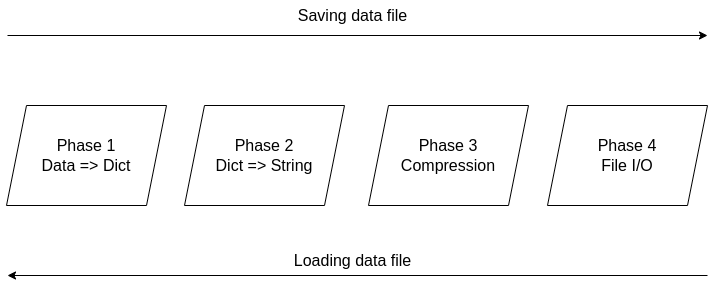|
Lately, we've put together a new survey to better understand this area and the main pain points associated with it. It would be great if you could contribute through a response and perhaps through sharing this survey with friends and colleagues. Cheers! https://s.surveyplanet.com/arw5bz4a This is the second part of the Data Literacy for Professionals article
Examples of Data Literacy in Practice Data literacy adds value to an organization in various ways, one of which is to support decision-making. Say you need to create a new marketing campaign to increase customer retention, for example. Where would you start? Would you just come up with a few random ideas, select the most promising ones, and run with it? A data literate professional would take a step back, examine the data at hand, see if there was a way to collect additional data, if necessary, and then work with some analyst to make sense of it all. Then, upon contemplating the insights gathered from this analysis, he would find some practical alternatives and discuss them with the marketing team (which might be even his immediate subordinates). Afterward, he might want to dig deeper into a specific option or two and after examining the corresponding data and insights further, come up with a data-backed decision to present to the marketing executives. Another example of how data literacy would add value to decision-making could be UI enhancement, a vital part of the UX. For example, say that the site doesn't get many people to click on the "buy" button. Someone identifies this problem by observing how the sales funnel is and brings it to your attention. You then explore various alternatives for making the "buy" button easier to stand out, perhaps experimenting with its color, size, etc. Which option would you go with, however? If you are data literate, you get the help of a data scientist to design an experiment, run it, and come up with some insights as to which option yields a better click-through rate. This analysis can involve some statistical tests too. You'd then think about all this, evaluate its reliability, and decide on the most promising option for the button based on the results of this analysis. This mini-project can help improve the UI and possibly the whole UX, driving more sales for the company. New products and services can also come about through data literacy. For instance, you could have a new analytics service for the users made available either on the website (if each user has an account there) or via an API. Perhaps even something geared towards a more personalized interface, based on the user's behavior on the website, an interface that can even change dynamically. All these may seem like magic to someone unaware of the potential of data but for a data-literate professional, especially someone with a bit of imagination, they are as commonplace as a coffee shop. In the competitive world we live in, getting an edge is paramount and something that data literacy can enable. Data literacy can help solve problems faster and more reliably, come up with new viable products/services based on data, and even bring about a more efficient and transparent culture in the organization, one based on a data-driven mindset. Additionally, data literacy can help make the most of the specialists involved in data work, improve employee retention (for these and other information workers), and transform the organization into a place that keeps up with the latest tech developments. An organization like this can foster more contentment and efficiency in its employees and enable them to commit long-term. A place like this can help individual professionals in many ways while at the same time benefiting other people involved, such as users and customers. In times like these, when the economy and the market are unstable, such improvements can bring about stability and even growth on both an individual and a collective level. Final thoughts Data literacy isn't a nice-to-have, not anymore anyway, but a necessity for any organization that wants to keep its place in today's increasingly digital world. A company comprising data-literate people, especially managers and other knowledge workers, can leverage resources it didn't know it had because they are in the form of data. Also, it can make it more agile as it can explore acquiring additional data resources and using them to improve existing data-related processes and services further. This company's competitors are probably doing this already, so it's no longer a luxury to invest in data literacy and use it to cultivate a data culture and make data-driven decisions. Data literacy also helps individual professionals through a series of specific improvements. For example, a mid-level manager can become more data literate and have a more modern approach to tackling the problems her team faces. Additionally, she can hire new members or train existing ones so that they can become more competent in handling and analyzing data to tackle the tasks in their workflows. Maybe even discover new ways to deal with bottlenecks and other issues that hinder efficiency. All that progress might eventually manifest as a promotion for that person and other people on her team. And if that person decides to leave that organization, she can have more options in future work placements and even new roles, thanks to her data literacy ability. Overall, data literacy is a powerful tool, or mindset and skill-set to be more accurate, for leveraging data and making better decisions accordingly. It is very hands-on and benefits people and organizations in various ways. It involves understanding data and how we govern it, analyzing it effectively, presenting and communicating the insights discovered, and protecting data/information, among other things. It entails understanding where privacy fits and taking actions to keep data related to people's identities under wraps. Data literacy is closely linked to data strategy and having a data culture in the organization. Being literate about data can also give professionals a competitive advantage over their data-illiterate colleagues and make a company more agile and relevant in the market. Especially when it comes to complex problems and difficult decisions, it can help bring about more reliability and objectivity to the whole matter. This leveling up can enhance the organization overall, along with everyone associated with it, be it partners, vendors, and, most importantly, its customers and users. To learn more about data literacy, feel free to explore the corresponding page of this site. Cheers! Introduction
Different people mean different things when they talk about data literacy. For this article, so that we are on the same page, let's use the definition of "the ability to create, manage, read, work with, and analyze data to ensure & maximize the data's accuracy, trust and value to the organization" (D. Marco, Ph.D.). Note that this definition highlights a crucial characteristic of data literacy which entails coherency and collaboration within the organization, something that often reflects a particular kind of culture. I'm referring to the data culture, which is an integral part of data strategy, merging the business objectives and plans with the data world where data becomes a kind of asset. All that's great, but it may seem a bit abstract. However, data literacy is very hands-on, even if it's not as low-level work as analytics. It is also utterly significant for all sorts of professionals, particularly decision-makers. Many people talk about making data-driven decisions and having a data-driven approach to problem-solving. How many of them do it, though, and to what extent? Well, data literacy enables professionals to do just that and make data something they value and leverage for the benefit of the whole. Data literacy is beneficial for other people too. For instance, when someone works in a data-literate organization, there tends to be more transparency about how decisions are made and what different pieces of data mean. So, if you have a role that involves data in some shape or form, you can be sure that it's not a black box and that you can learn from it. Naturally, this implies that you are data literate to some extent too! Data literacy is a state of mind, a way of thinking and acting about data. As such, it has many benefits that depend on the organization and the data available to it. The fact that many companies base their entire business model on data attests to the fact that data is crucial as an asset. To unlock its value, however, you need data literacy. Key Ideas and Concepts of Data Literacy Let's delve deeper into this by looking at the components of data literacy. For starters, data literacy involves understanding data and how it is governed. This part of data literacy is vital since many organizations have lots of data that is essentially useless because it's in silos and inaccessible to those who need it. This problem is essentially a data governance one. Also, as much of it involves personally identifiable information (PII), it has to abide by specific regulations such as GDPR. Otherwise, this data may be a huge liability. Data literacy also involves analytics, as it is when data is turned into information that it truly becomes useful. The latter we can understand better and reason with, especially in decision-making. Data in its original form is usually understandable only by computers. Analytics makes this transformation and enables others to benefit from the data. Usually, analytics work is handled by specialists, such as data scientists. Data literacy also involves presenting and communicating data. This part of data literacy often entails reasoning about insights and exploring how they can apply to an organization's challenges. Otherwise, data has just ornamental value, which may not be enough to justify people working with it. Perhaps that's why today every data professional is assessed based on communication skills too, not just technical ones. Finally, data literacy involves protecting the data and whatever information it spawned. It's usually specialized cybersecurity processes that ensure the protection aspect of data literacy, which also includes preserving the privacy of the people behind that data. In larger organizations, there may even be specialized professionals involved in this kind of work. What does a data-literate professional look like, though? For starters, it's not like he stands out from the crowd. But when that person engages in a conversation on a business topic, it becomes clear that they know how data can be used as an evergreen asset. Such a person may also undertake responsibilities related to the use of data in decision-making, be it through a data-driven marketing initiative, a cohort analysis of the customers or users, etc. A data-literate professional can undertake numerous roles, not just those related to hands-on data work. He can be a competent team leader, a business liaison, a consultant, and even an educator, promoting a data culture in the org. As long as that person has a solid understanding of data and how the organization can put the data available into good use, that person is a data literate professional and can add value through that. Generally, data-literate professionals are very competent in leveraging data for making decisions and driving value in the org. This aspect of data literacy often involves having a sense of data and its potential. For someone else, data may be just something abstract and interesting to data professionals only. For the data-literate professional, however, it's something as powerful as a product sometimes. At the same time, it's a pleasant challenge because just like products need work before you can trade them for money, data also requires special treatment. A data-literate professional accepts this challenge and works towards making it a reality. This special treatment may involve getting the right people in a team or leveraging the existing ones, doing some mentoring even, and turning this understanding of data into a set of processes that transform data into something of value. When it comes to data literacy, there are several challenges most professionals change. I say most because people with a data background tend to find this whole matter intuitive and relatively easy. However, people who come from different backgrounds tend to struggle with data literacy in various ways. After all, traditional education stems from a time when data wasn't something educators knew or cared about. Their data literacy skills were rudimentary at best, while they focused on educating people about those business models and concepts that were more relevant back then. That's not to say that business acumen isn't that important. It's more important, however, when it's integrated with data acumen (as Bernard Marr eloquently illustrates in his book and courses on data strategy). Data literacy is a journey for most professionals, and there are different levels to it. Maintaining a sense of humility about this matter and understanding there is always more to learn can go a long way. This isn't an easy task, especially for accomplished professionals who got far in their careers using traditional ways of thinking about assets and business processes. Perhaps through proper coaching, mentoring, and other educational tools, they can overcome the challenges that plague this journey toward complete data literacy. Data literacy is crucial in today's digital economy. As data is what some refer to as the new oil, the prima materia of many products, data literacy is the equivalent of an oil-based engine. The main difference is that it doesn't pollute and there are no practical limitations on the fuel! Nevertheless, it's not trivial as some data people make it out to be. Of course, you can plug this data into some off-the-shelf model and get it to spit out some results that you can put into some slick presentation and share with the stakeholders. However, this is often not enough or relevant. Data literacy helps people see how the data relates to the business objectives, tackling specific problems and answering particular questions. Having some fancy data model may be something interesting to boast about, but if it doesn't help the organization with its pain points, it seems like an ornament rather than something of value. Going back to our metaphor, it's more like a gadget than an engine that can help us traverse the distance between where we are as an organization and where we need to be. To be continued... In the meantime, feel free to learn more about data literacy in the corresponding page of this site. Don't let the somewhat philosophical title mislead you! This isn't an article for the abstract aspects of the world, but something pointing to a very real problem in our thinking and how it makes experiencing life difficult. Namely, an age-old issue with our logic, reasoning, and how as a data modeling tool, it fails to capture the essence of the stuff it aims to understand. In other words, it's a data problem that influences how we process information and understand life in its various aspects. In more practical terms, it is the loss of information through predefined categories that may or may not have relevance to life itself.
The problem starts with how we reason logically. In conventional logic, there are two states, true or false. It's the simplest possible way of thinking about something, assuming it's simple enough to break it down into binary components. If we look at a particular plant, for example, we can say that it's either alive or dead. Fair enough. Of course, this approach may not scale well for a group of such plants (e.g., a forest). Can a forest's state be reduced to this all-or-nothing categorization? If so, what do we sacrifice in the process? Things get more complicated once we introduce additional categories (or classes in Data Science). We can say that a particular plant is either a sprouting seed (still well within the ground), a newly blossomed plant (above the ground too, but just barely), a mature plant (possibly yielding seeds of its own), or a piece of wood that's lying there lifeless. These four categories may describe the state of a plant in more detail and provide better insight regarding how the plant is fairing. But whether these categories have any real meaning is debatable. Most likely, unless you are a botanist, you wouldn't care much about this classification as you may come up with your own that is better suited for the plant you have in mind. Naturally, the same issue with scalability exists with this classification also, as it's not as straightforward as it seems. A forest may exist in various states at the same time. How would you aggregate the states of its members? Is that even possible? In analytics, we tend to avoid such problems as we often deal with continuous variables. These variables can be aggregated very easily and we can teach a computer to reason with them very efficiently, perhaps more efficiently than we do. So, a well-trained computer model can make inferences about the plants we are dealing with based on the continuous variables we use to describe those plants. Practically, that gives rise to various sophisticated models that appear to exhibit a kind of intelligence different from our conventional intelligence. This is what we refer to as AI, and it's all the rage lately. So, where does conventional (human) intelligence end and AI begin? Or, to generalize, where do any categories end and others begin? Can we even answer such a question when we are dealing with qualitative matters? Perhaps that's why we have this inherent need to quantify everything, especially for stuff we can measure. But how does this measurement affect our thinking? It's doubtful that many people stop to ask questions like that. The reason is simple: it's very challenging to answer them in a way agreeable to many people. This lack of consensus is what gave rise to heuristics of all sorts over the years. We cannot reason with complexity and sometimes we just need to have a crisp answer. Heuristics provide that for us, empowering us in the process. These shortcuts are super popular in data science too, even if few people acknowledge the fact. There is something uncomfortable with accepting uncertainty, especially the kind that's impossible to tackle definitively. Some things in nature, however, aren't black and white or conform to whatever taxonomy we have designed for them. They just are, giddily existing in some spectrum that we may choose to ignore as it's easier to view them in terms of categories. Categories simplify things and give us comfort, much like when we organize our notes in some predefined sections in a notebook (physical or digital) for easier referencing. The problem with categories arises when we think of them as something real and perhaps more important than the phenomena they aim to model. John Michael Greer makes this argument very powerfully in his book "The Retro Future," where he criticizes various things we have taken for granted due to the nature of our technology-oriented culture. But why are categories such a big problem, practically? Well, categories are by definition simplifications of something, which would otherwise be expressed as a continuum, a spectrum of values. So, by applying this categorization to it, we lose information and make the transition to the original phenomenon next to impossible. Additionally, categories are closely related to the binary classification of things since every categorical variable can be broken down into a series of binary variables. In the previous plant example, we can say that a plant is or isn't a sprouting seed, is or isn't a newly blossomed plant, etc. The cool thing about this, which many data scientists leverage, is that this transition doesn't involve any information loss. Also, if you have enough binary variables about something, you can recreate the categorical variable they derived from originally. All this mental work (which to a large extent is automated nowadays) makes for a very artificial worldview where everything seems to exist in a series of ones and zeros, trues and falses, veering away from the complexity of the real world. So, it's not that the world itself is very limited, but rather our logic and as a result our perception and our mental models of it that is limited. As a well-known data professional famously said, "all models are wrong, but some are useful" (George Box). My question is: "how much accuracy are we willing to sacrifice to make something useful from the information at hand?" If you find that heuristics are a worthwhile option for dealing with the complexity of life effectively, you'd be intrigued by how far they can go in data science and AI. There are plenty of powerful heuristics which can simplify the problems we are dealing with without information loss, all while bringing about interesting insights and new ways of applying creativity. My latest book, The Data Path Less Traveled, is a gentle introduction to this topic and is accompanied by lots of code to keep things down-to-earth and practical. Check it out! Due to the success of the Analytics and Privacy podcast in the previous few months, when the first season aired, I decided to renew it for another season. So, this September, I launched the second season of the podcast. So far, I have three interviews planned, two of which have already been recorded. Also, there are a few solo episodes too, where I talk about various topics, such as Passwords, AI as a privacy threat, and more. Since I joined Polywork, many people have connected with me on various podcast-related collaborations, some of which are related to this podcast. So, expect to see more interview episodes in the months to come.
There is no official sponsor for this season of the podcast yet, so if you have a company or organization that you wish to promote through an ad in the various episodes (it doesn’t have to be all the remaining episodes!), feel free to contact me. Cheers! My latest book, The Data Path Less Traveled, published by Technics Publications, is going to make its official debut this Friday, September 9. If you are up for it, you can participate in a short presentation for it, along with Q&A, to get acquainted with the topic (and me). This online event is at 10 am EST (7 am PST, 4 pm CET) and you can register for it here. It's entirely free and you don't need to have any experience or expertise on this topic to follow it. I hope to see you there!
Introduction
I've written about Nim in the past, but it's been a while. So, I decided to do a deep dive on it this time as the language seems to have evolved a lot since then, plus I had promised that I'd keep an eye on it. So, let's look at this language anew and explore how it's faring these days. Why Nim and why it's worth learning about it Nim has been around for almost a decade and a half now but it remains in relative obscurity. So, why should you learn about it nevertheless, especially when there are other, more established languages out there? Well, Nim is super fast (it compiles to C, so you can expect similar performance), it's very intuitive in its syntax (especially if you are coming from a Python background), and it's versatile. It also has a committed team without a big company behind it, making it the de facto underdog of programming languages. Despite its hardships, it has managed to get a production-ready version out and find some niche use cases to make it stand out from the crowd. Its documentation is pretty good (much better than many other languages' docs) while its official website even has some comprehensive tutorials for learning Nim. It has a variety of packages and it's constantly growing in its codebase, making it a very promising language still, against all odds. Nim from a Pythonista's perspective Although Python is hardly a "real" programming language and shouldn't be compared to languages like Nim that do some real heavy lifting, these days it's in vogue. It's a fairly decent scripting language ideal for someone who's never learned the ins and outs of computers and how they work. Perhaps that's why it's so popular today. What Python does well is its syntax and the simplicity of its code. Some call it pseudocode that runs and they aren't wrong. Once you get accustomed to its idiosyncrasies, Python is fairly straightforward to work with while its code is very similar to the pseudocode version of an algorithm. Nim adopts this attribute of Python, making its code very intuitive and comprehensible, even to newcomers to the language. So, for a Pythonista, Nim will seem strangely familiar and should be easy to understand from the very beginning. This was probably a design decision, to make the barrier of entry to the language as low as possible. It's noteworthy that the language under the hood is quite different though as the memory management, the indexing, and the whole approach to variable-setting are closer to that of low-level languages. So, it may still require some effort to learn Nim properly, even if you have mastered Python. Nim from a C programmer's perspective As Nim is somewhat closer to C than any other language, it also is easy for a C language user. After all, the Nim compiler gives you the option to see the C code of each Nim program you create. If you are used to the curly brackets that C features in its programs, Nim gives you the option of writing your scripts similarly, using parentheses instead. This way, the barrier to entry to this language shouldn't be too high in this case either. The fact that it uses 0-point indexing like C and similar data structures makes Nim familiar even to C programmers. Nim's compiler is much better, however than that of C and any other low-level language. It can pinpoint issues so that you don't have to worry about the executables once they are created. It can also provide you with some useful feedback to make troubleshooting easier. Additionally, memory management is better than C and overall it's easier to work with Nim as it's more high-level as a language. Nim from a data professional's perspective From a data professional's perspective, Nim is getting there. Even if its base package doesn't support any complex data structures that lend themselves to real-world data (like Julia does, for example), it has a plethora of external packages that do the trick. So, the language seems to be data-ready right now, even if it's hard to see it competing with Python or Julia for data-related work, right now. After all, beyond the coding capabilities of a language, other factors come into play, such as the language's integration with Jupyter notebooks. Kotlin integrates smoothly (even if it is a compiled language like Nim), but Nim's integration is iffy. Some commands like the one requiring input from the user don't seem to work at all, plus the Jupyter integration module is fairly new, compared to that of other programming languages. Additionally, Nim doesn't have a large data science community, making it a bit more challenging for a Nim learner from the data science field to feel at home. Although this may change in the future, it seems that only the most committed data scientists can find Nim a valuable tool for analytics-related work. Nevertheless, Nim lends itself to data engineering work as it has various database and data file packages, while its speed makes it ideal for this sort of task. Nim's role in Cryptography and Cybersecurity What about cryptography though and cybersecurity in general? Well, in this niche Nim seems to thrive. It has mature libraries for randomness and hashes, while it's fairly easy to code something related to this field from scratch. The fact that it's very fast makes it ideal for this kind of application. Also, Nim's ability to create small executables gives it more flexibility and enables it to emulate "red team" scenarios, so that the "blue team" can better prepare for cyberattacks. It's a shame that the cybersecurity and cryptography communities aren't as open-minded about alternative programming languages to give Nim a shot. This language has a lot to offer here and it wouldn't be surprising if in the future more applications in these fields find themselves coded in Nim. This is likely going to happen through hobbyists and independent researchers with a knack for programming though. Nim prospects Beyond all these facets of Nim, the language seems to have a promising future right now. There are several projects in the works, it has a UI framework, and the number of content creators writing about Nim has increased. More people are becoming aware of the value-add the language offers, while the world's obsession with Python is being challenged as more easy-to-code-in languages enter the coding sphere. Although it's unlikely it will ever be as popular as the languages that have come to dominate, it's bound to continue and become better as its community grows. Nowadays there are even conferences on Nim and the language seems to become easier to adopt and acknowledge, at least for certain use cases that systems computing. The big milestone, however, would be if Nim enters the world of code learning platforms like CodeAbbey, where people can solve interesting challenges using the language and refine their skills in the process. The fact that it's already on Exercism and Rosetta Code, however, is a step in the right direction. Final thoughts about Nim So, there you have it. Nim is a powerful programming language with quite a few things to offer, as it's heading toward version 2.0. Whether it will get a large enough following is up to you as most people tend to shy away from language that doesn't have the backing of a large company or academic institution. Also, it seems that lately there are lots of languages out there, so deciding to commit to this one is even more challenging. Yet, those who have delved into Nim can see its merit and are likely to continue with it. Even if it doesn't make it big like the languages it borrows from, it's bound to stick around and thrive in its niches. It's been over two years since the Compressed Data Format (CDF) made its debut, making storing data files in Julia a breeze. Not only does it handle various types of data easily, but it also allows for comments and any other stuff you'd like to include in your data file before sharing it with other Julia users. The native data file formats the language has been okay, but when it comes to larger datasets, they fall short. Also, conventional data file formats like CSV and JSON, although mature and easy to use, tend to be bulky as the number of data points/variables grows. CDF remedies all that by employing a powerful compression algorithm on the data at hand. The CDF script consists of a series of functions while it leverages another script for handling binary files. Because if you want to do anything meaningful with files, you need to go down to the 1s and 0s level. The conventional IO handling Julia offers is fine, but it's limited to text files mainly. However, the language has binary file capabilities, which are leveraged and simplified in the binfiles.jl script that CDF relies on for its IO operations. That script has just two functions, one for reading binary files and one for writing them. Naturally, everything on that level is expressed in Int8 vectors, as a data stream related to a binary file is a series of bytes, often in the form of an 8-bit number (ranging between -128 and 127, inclusive. So, if you wish to delve into this sort of file operation, make sure you familiarize yourself with this data structure. Fortunately, the CDF script is more high-level than the binfiles.jl one. Still, it needs to deal with binary files at one point, so it has to translate the data streams it handles into Int8 vectors. To make the most of the bandwidth your machine has, it breaks down the whole process into these distinct phases, which you can view in Fig. 1: 1. Turning the data into a Dict object if it's not in that form already. 2. Turning the dictionary into a text stream (string variable). 3. Compressing the text stream. 4. Passing the compressed data into the binary files function to read/write the corresponding files.
The handling of the binary files takes place using the binfiles.jl script, as mentioned previously, so we won't cover it in depth in this article. For the remaining phases, let's start from the easy part: compression (phase 3). Here the CodecZlib package is used, which contains a bunch of compression algorithms. The CDF script leverages the Deflate algorithm due to its speed and efficiency. Naturally, as everything is already in the form of a string variable by that stage utilizing the compression algorithm is pretty straightforward. Now the problem becomes turning everything into a string (phase 2). Although this seems straightforward, doing that all while ensuring that the whole process is easily reversible can be challenging. Fortunately, if everything is already in dictionary form, it's not that hard. After all, a dictionary comprises various keys which correspond to certain values, all of which can be retrieved through the keys() and values() functions of the dictionary class. So, handling a dictionary isn't that hard, and it can be done methodically. Of course, dumping the dictionary's contents into a string file isn't a great idea since the various key-value pairs need to be separated. One way to do this, which is also the way CDF is written, involves putting all the keys together in the beginning and then all the values corresponding to these keys. Each key is separated from the next using a space (the keys correspond to variable names, so they tend to be void of spaces). From that point on, for all pieces of data that need to be connected in that output string, a special character is used, one which doesn't come into play in data files. This way, it's easy to split the string between the keys and the values, using that special character as a separator. The same goes for all the different values that are added to the string. Since they might contain spaces in them, we use the special character to separate each from the next. Following that, we also store the types of these values so that we can reconstruct the original contents of the dictionary. The types are contained in a separate array and are separated by spaces. To make this information more easily accessible, we position it at the end of the string, separated from the values part using the special character. To create the dictionary (phase 1), we merely need to put the variable at hand into an empty dictionary, with the variable name as its key and its contents as its value (this is done automatically with the corresponding function of the CDF script). This process is a bit more cumbersome a process as it requires the user to input both the variable and its name, while it’s limited to a single variable (e.g., a matrix of a dataset). That’s why it’s generally better to have all the data available as a dictionary before using the CDF script. This way, if you need to add any comments to the data, you can do so by adding another key-value pair to the dictionary where the data lives. The data types supported by CDF at this stage are String, Char, Real, Float64, Int64, and Array of numbers of bits. In future versions of CDF, it may also be able to handle more complex scenarios, such as DataFrames, nested arrays, arrays of strings, etc. CDF can be useful for storing models too, with the (hyper)parameters being in a particular part of the dictionary, the operational conditions in another part and some metadata about the training data and the model's tested performance in another part. This way, by loading this CDF file, you can get all the relevant information about the model to use in your project. Although I really enjoy Julia and other new programming languages, I also use Python, SQL, etc. for various projects. Beyond that, I tend to mentor students in these more conventional languages, as it's part of their curriculum. Learning these languages, however, often comes at a cost and if someone has already shelled thousands of dollars in a course, it's doubtful they would be willing to spend more to go deeper on these subjects. Fortunately, AIgents has you covered. This Data Science and AI platform for practitioners and learners in these fields recently launched a learning branch on its website, featuring a selection of useful resources for learning these technologies (these live on various sites, which you can find on your own but AIgents saves you time by do this tedious task for you and curating them to some extent). The best part is that all of these resources are free while there is also a community this platform has, to facilitate further such initiatives. You can check it out here. Cheers! Remember all those videos I used to make for Safari / O'Reily's Learning platform? Well, most of them are now gone but the best ones (according to the publisher) are still available for you, in a pay-per-view mode. Learn more about them through this 1-minute video I made about them. It's just six of them at the moment, but I may get more of them out there in the months to come. Cheers |
Zacharias Voulgaris, PhDPassionate data scientist with a foxy approach to technology, particularly related to A.I. Archives
April 2024
Categories
All
|










 RSS Feed
RSS Feed